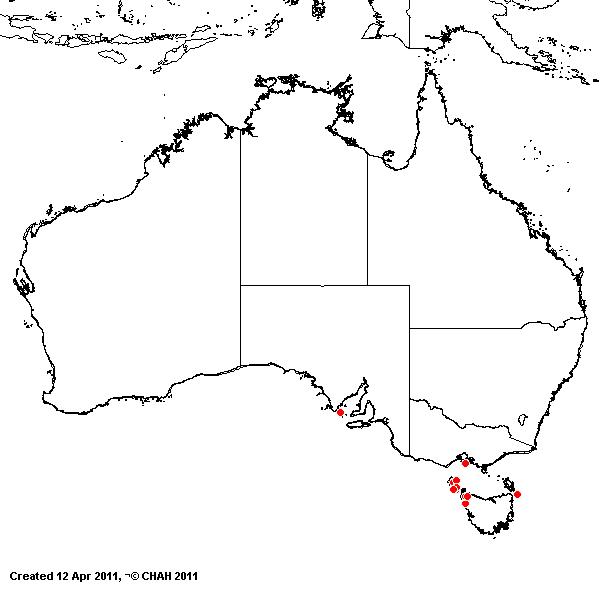Catapodium marinum* (L.) C. E. Hubbard. Kew Bulletin 375 (1954).
Classification. (GPWG 2001) : Subfamily Pooideae. Tribe Poeae.
Basionym and/or Replacement Name: Festuca marina L., Amoen. Acad. 4: 96 (1759).
Type of Basionym or Protologue Information: LT: Newton s.n., ex Herb. Plukenet in Herb. Sloane, Hortus Siccus 84: 87 verso (BM). LT designated by Stace & Jarvis, Bot. J. Linn. Soc. 91: 440 (1985).
Recent synonyms: Desmaziera marina.
Key references (books and floras): [2002] D.Sharp & B.K.Simon, AusGrass, Grasses of Australia, [2009] A.Wilson (ed.). Flora of Australia, Vol 44A. Poaceae 2 (296).
Habit. Annual. Culms erect or geniculately ascending or decumbent, 3–24 cm tall. Ligule an eciliate membrane, 0.5–3 mm long, erose, acute. Leaf-blades flat, 1–10 cm long, 1–3.5 mm wide. Leaf-blade surface scaberulous or scabrous, glabrous.
Inflorescence. Inflorescence solid, a raceme. Panicle linear or oblong, 0.5–7 cm long, 0.4–1.2 cm wide.
Spikelets. Spikelets pedicelled. Fertile spikelets many flowered, with at least 2 fertile florets (4–12), comprising 4–12 fertile floret(s), with diminished florets at the apex, oblong, laterally compressed, 4–9 mm long.
Glumes. Glumes dissimilar. Lower glume lanceolate, coriaceous, keeled, 1-keeled, 1–3 -nerved. Upper glume ovate, 2–3.5 mm long, coriaceous, keeled, 1-keeled, 3–5 -nerved.
Florets. Fertile lemma 2.4–3.8 mm long, keeled, 5 -nerved. Lemma surface glabrous. Palea 2 -nerved. Anthers 3.
Continental Distribution: Europe, Africa, and Temperate Asia.
Australian Distribution: Victoria, Tasmania.
Victoria: Gippsland Plain. Tasmania: King Island, North West.
Notes. Introduced. Recorded from NW Tas., 1 record in Vic. and also from W.A. Native to Europe and the Mediterranean. Coastal in sandy soils. Flowers Sept.-Dec. Fruits Dec.-Jan.





